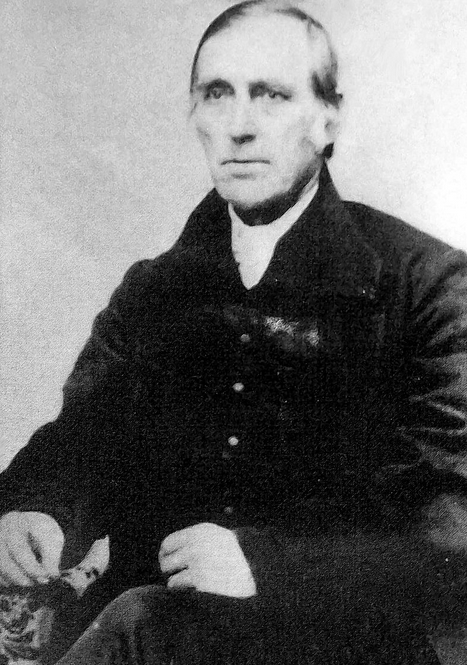By Lynn Burnett
Born in North Carolina in 1798, Levi Coffin was born into a Quaker family that had been deeply influenced by the antislavery teachings of John Woolman… teachings that had played an important role in Quakers taking on an abolitionist stance. In addition to being raised in an abolitionist household, Levi’s own antislavery commitment was also influenced by an interaction he had with an enslaved man when he was seven years old: passing by the man on a chain gang, the young Levi asked him why he was in chains, and the man replied “that it was to prevent him from escaping and returning to his wife and children.” The comment deeply troubled Levi, and stayed with him.
By the time Levi was a young teenager, his family had turned their barn into a hiding spot for escaped slaves heading north. Levi was given the task of making sure they had food, water and other supplies. During this era, however, a series of laws were passed cracking down on participants in what later became known as the Underground Railroad. By 1820, Quakers were being openly persecuted in North Carolina for their abolitionist beliefs. As this persecution escalated, Levi’s family relocated to Indiana, where their home became one of the early stops on the antislavery freedom routes developing in that region. One of the first things Levi did in Indiana was to build a relationship with the free Black community there: slaves often escaped to free Black communities in the North, but slave catchers expected this… and felt freer to abuse their power there. It was thus safer for escaping slaves to stay with White families such as Levi’s.
In Indiana, Levi Coffin developed a successful business. He leveraged his wealth and his network in the cause of abolition, buying stock in companies that did not use slave labor and marketing their products. He helped bring more people into the cause and helped develop a more formalized route in what he called the “mysterious road.” By 1833 he had become the director of a bank, and by 1838 was wealthy enough to build a large home with secret passages and hiding spaces. It was during the 1830s that the term “Underground Railroad” came into being… and Levi’s home became known within the underground network as “Grand Central Station.” Fugitive slaves would dress as maids and butlers of Grand Central, use the hiding spaces if necessary, and head north in the dead of night hidden on horse-drawn wagons carrying other commercial supplies. Historians estimate that over the course of his life, Levi Coffin probably assisted 4,000 enslaved people escape to freedom.
Additional Resources
Children’s Book:
Gwenyth Swain: President of the Underground Railroad: A Story About Levi Coffin.
Books
Levi Coffin: Reminiscences Of Levi Coffin: The Reputed President of the Underground Railroad.
Levi Coffin and William Still: Fleeing for Freedom: Stories of the Underground Railroad as Told by Levi Coffin and William Still.
Gail Kamer: Secrets Hidden Within: The Levi Coffin House.
Mary Ann Yannessa: Levi Coffin, Quaker: Breaking the Bonds of Slavery in Ohio and Indiana.
Articles
Quakers in the World entry.
Wikipedia entry.
Other Resources
Indiana State Museum and Historic Sites: Grand Central Station of the Underground Railroad: Welcome to the home of Levi and Catharine Coffin. (See even more resources here.)
